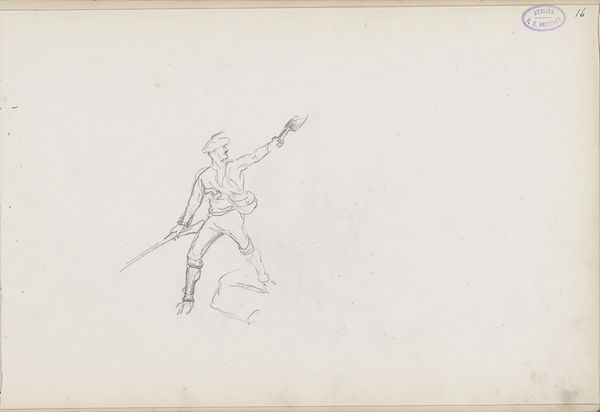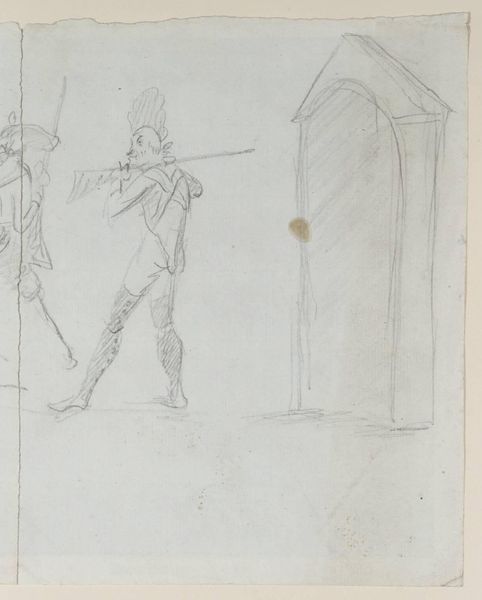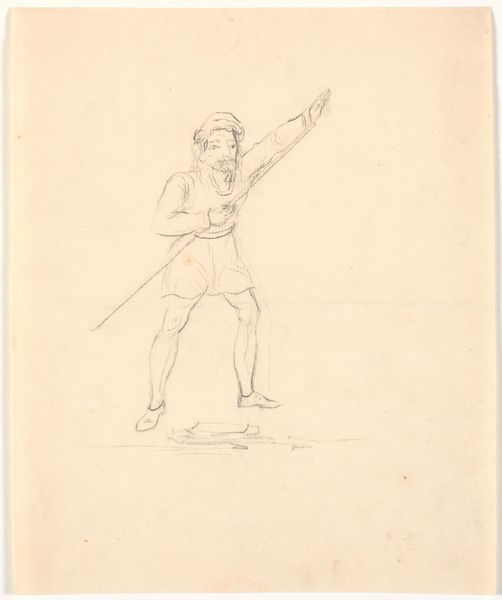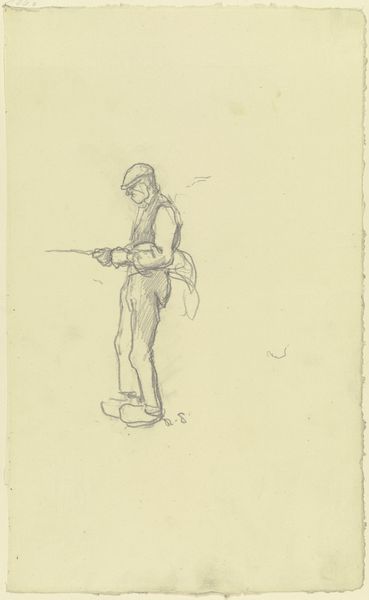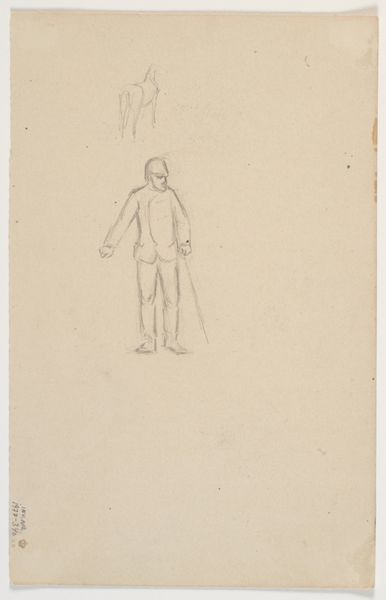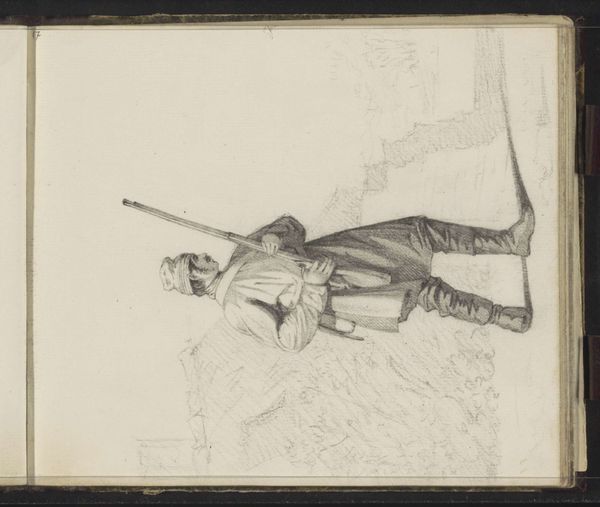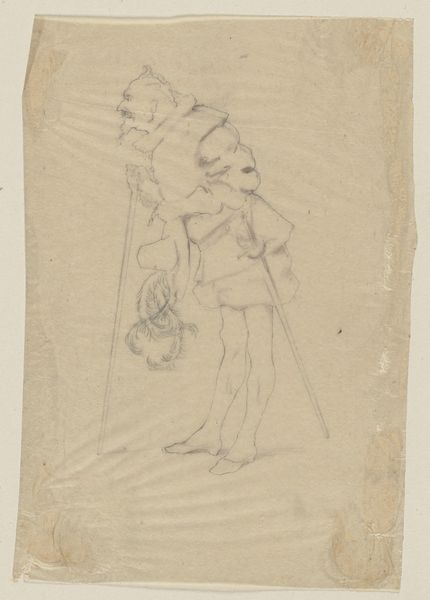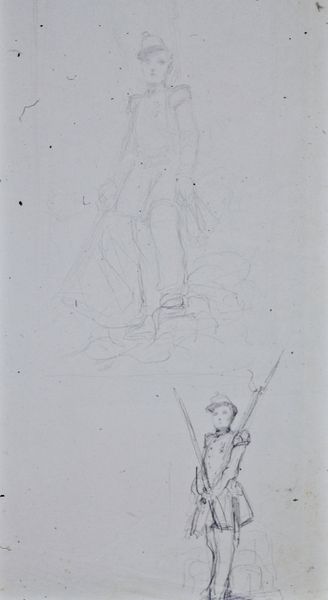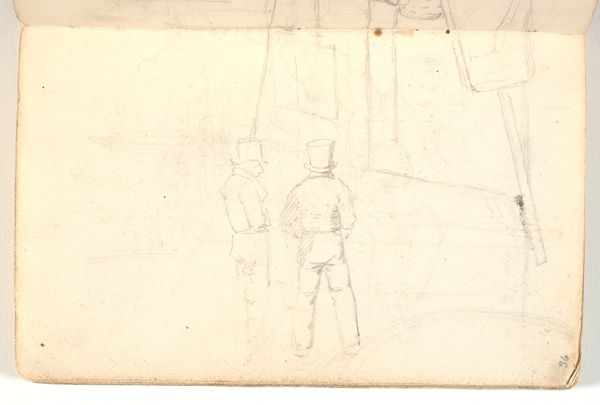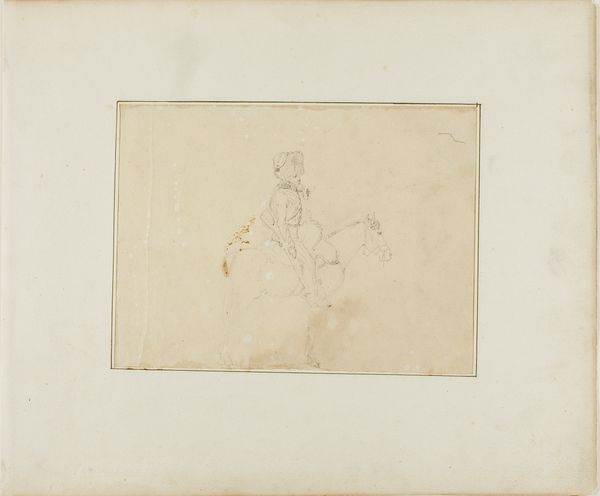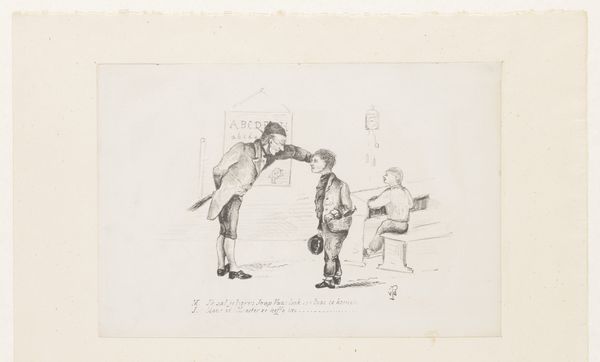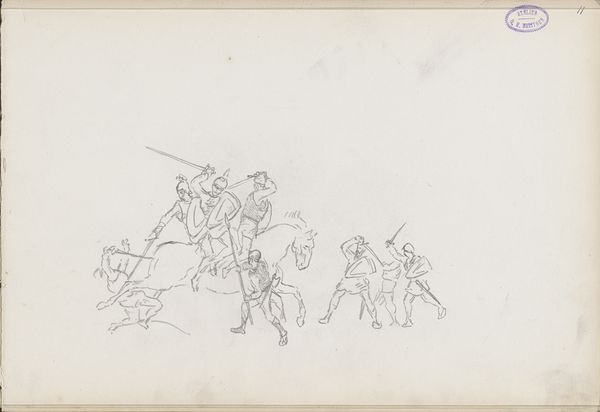
drawing, pencil
#
portrait
#
drawing
#
pencil sketch
#
figuration
#
pencil
#
line
#
realism
Dimensions: 240 mm (height) x 303 mm (width) (bladmaal)
Curator: Here we have "Blyantsrids af to fiskere," a pencil drawing from 1833 by Martinus Rørbye, held at the SMK, the Statens Museum for Kunst. Editor: It’s ghostly, isn’t it? The thin, pale lines suggest fleeting figures almost evaporating off the paper. What was Rørbye trying to capture with such restraint? Curator: Think of the physical constraints and realities of creating such a work at that time. This wasn't about grand gestures; it was likely a field sketch, done quickly, possibly on a small pad or directly into a notebook. This impacts the economy of the lines he uses. It’s less about a definitive statement and more about documenting visual information. Editor: Perhaps. But even this light touch is incredibly telling. The man with the spear raised feels heroic, drawing upon some deep-seated narrative. He could be Neptune, King of the Sea, preparing to strike. The other, much more grounded, embodies humble waiting, yet even his costume feels significant, like he is waiting for providence or a ship carrying loved ones to return to shore. Curator: And that garmented choice is not coincidental, rather directly reflective of the limited choices these men had to clothe themselves with during the day and labour that produced said costume. Look at the visible details. He wasn’t merely interested in idealized types; Rørbye was acutely aware of, and showing us, working conditions and how dress reflected class and status. Editor: Perhaps both can be true. I see these fishermen tapping into deeper collective memories. Representations of fisherman are very popular across the North Atlantic nations, almost a shorthand for stories and histories of maritime exploration. These aren’t simply anonymous laborers; they're archetypes embodying our connections to the sea and struggle. Curator: The interplay is undeniable. However, without understanding Rørbye's access to readily available material and modes of labor, aren’t we losing an appreciation for his achievement as a draughtsman? Editor: Maybe so, but acknowledging the image’s resonating power helps us better acknowledge Rørbye's craft. Curator: Yes, precisely, it enhances our insights by framing the creative processes of art within both its visual languages and modes of material creation. Editor: A perfect melding of symbol and process, then.
Comments
No comments
Be the first to comment and join the conversation on the ultimate creative platform.

